Hi everyone!! Aaron from color+light here! Really excited to hang with you all today!

 hey
hey
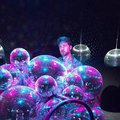 Hello! You have Jake from color+light here as well
Hello! You have Jake from color+light here as well
![]() Hello Jake, Hello Aaron
Hello Jake, Hello Aaron
 OK, there we go! Hi Aaron, welcome to the Hack Chat. And welcome everyone. I'm Dan Maloney, I'll be moderating today as we talk about the cool LED art that Aaron has created. And I see we have Jake here too - what about Cate?
OK, there we go! Hi Aaron, welcome to the Hack Chat. And welcome everyone. I'm Dan Maloney, I'll be moderating today as we talk about the cool LED art that Aaron has created. And I see we have Jake here too - what about Cate?
 As if on cue...
As if on cue...
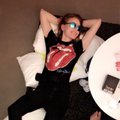 Hiya! I'm here as well.
Hiya! I'm here as well.
 Welcome Cate, looks like everyone is here. Perhaps you can all tell us a little about yourselves to start us off?
Welcome Cate, looks like everyone is here. Perhaps you can all tell us a little about yourselves to start us off?
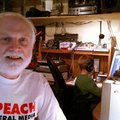 Eager to hear this.
Eager to hear this.
 Hi everyone! I’m originally from San Diego but have been living in SF for the last 5 years. I’m a huge fan of live music and a musician myself, and enjoy travel, backpacking, and making LED art. I’ve got a degree in mechanical engineering, and spent some time working as a big data consultant before getting into LED art/events with Symmetry Labs. While working there, I was their head of operations and lead project manager, and delivered more than $5m in LED art over 3 years with them, including 3 permanent outdoor installations.
Hi everyone! I’m originally from San Diego but have been living in SF for the last 5 years. I’m a huge fan of live music and a musician myself, and enjoy travel, backpacking, and making LED art. I’ve got a degree in mechanical engineering, and spent some time working as a big data consultant before getting into LED art/events with Symmetry Labs. While working there, I was their head of operations and lead project manager, and delivered more than $5m in LED art over 3 years with them, including 3 permanent outdoor installations.
Late last year, myself, Cate, and Jake left Symmetry to start color+light. In addition to continuing to make large scale LED art, we’ve been working on our first consumer product these last couple months, which is an LED houseplant called fluora.
 Hello! I’m Jake. I’ve been working on LED installations for nearly a decade. I worked at Symmetry Labs for many years, and also have worked on various well-known installations at Burning Man, Coachella, and others. Although, primarily a software engineer, I enjoy getting to be involved in all areas of the creative development and engineering required to make sure the whole puzzle come together. These days, I am helping build color+light with Aaron and Cate, and trying to keep the dream alive of building large scale light installations and also on bringing the magic of those installations in to people’s homes.
Hello! I’m Jake. I’ve been working on LED installations for nearly a decade. I worked at Symmetry Labs for many years, and also have worked on various well-known installations at Burning Man, Coachella, and others. Although, primarily a software engineer, I enjoy getting to be involved in all areas of the creative development and engineering required to make sure the whole puzzle come together. These days, I am helping build color+light with Aaron and Cate, and trying to keep the dream alive of building large scale light installations and also on bringing the magic of those installations in to people’s homes.
 Yo! I work as a embedded programmer, I love building strange things that lights up. I'm using mostly LED's in my installations.
Yo! I work as a embedded programmer, I love building strange things that lights up. I'm using mostly LED's in my installations.
 Hey tim! nice to meet ya!
Hey tim! nice to meet ya!
 Hi everyone! My route to our company was a bit unconventional. I went to law school and started practicing law in Washington DC about 10 years ago. I did that for about 5 years and decided it wasn’t the right career for me — I just wasn’t enjoying life. So I quit law and became a professional poker player for several years, became one of the top players in the world, then got tired of that as well. I sat down and brainstormed what I wanted to do next, and surprisingly discovered that my answer was LED art, because I felt like many of the most transcendent experiences I’d had involved it, and I wanted to learn how to create art like that. I didn’t have any experience with it and didn’t know how I’d break into it, but — and this 100% true — less than 24 hours later, I got a call from a friend saying an LED art company was looking to hire a general counsel, and asking if I might be interested. So I took that as a sign and went to work at Symmetry, where I met Jake and Aaron. We’ve been working together about a year and a half now.
Hi everyone! My route to our company was a bit unconventional. I went to law school and started practicing law in Washington DC about 10 years ago. I did that for about 5 years and decided it wasn’t the right career for me — I just wasn’t enjoying life. So I quit law and became a professional poker player for several years, became one of the top players in the world, then got tired of that as well. I sat down and brainstormed what I wanted to do next, and surprisingly discovered that my answer was LED art, because I felt like many of the most transcendent experiences I’d had involved it, and I wanted to learn how to create art like that. I didn’t have any experience with it and didn’t know how I’d break into it, but — and this 100% true — less than 24 hours later, I got a call from a friend saying an LED art company was looking to hire a general counsel, and asking if I might be interested. So I took that as a sign and went to work at Symmetry, where I met Jake and Aaron. We’ve been working together about a year and a half now.
 So who's the typical customer for these large scale pieces?
So who's the typical customer for these large scale pieces?
![]() Hey I'm also in DC. I'm a UI designer by day, artist by night. I like building strange things and encrusting them with 2020 LEDs
Hey I'm also in DC. I'm a UI designer by day, artist by night. I like building strange things and encrusting them with 2020 LEDs
 Mostly large real estate companies and experiential agencies
Mostly large real estate companies and experiential agencies
 Hi, I'm really curious what addressable lights you peeps typically use? And also to map the lights in 3D do you use cameras and pulse out IDs from the lights, to obtain coords?
Hi, I'm really curious what addressable lights you peeps typically use? And also to map the lights in 3D do you use cameras and pulse out IDs from the lights, to obtain coords?
 Getting to collab with music artists is always fun, but building things that have to be setup and torn down everyday is a unique challenge in custom LED projects.
Getting to collab with music artists is always fun, but building things that have to be setup and torn down everyday is a unique challenge in custom LED projects.
 Have you thought about maybe doing consumer specialty stuff. Kits for self-installation on walls or outside of homes?
Have you thought about maybe doing consumer specialty stuff. Kits for self-installation on walls or outside of homes?
![]() Hi from the Netherlands, some of my projects have been featured on hackaday, includinng an led suit I took to burningman.
Hi from the Netherlands, some of my projects have been featured on hackaday, includinng an led suit I took to burningman.
![]() What would you say the market's like for creative-ish programming in general? It seems like it's a sector that doesn't get a lot of promotion. It seems like you can do some really nice stuff with Processing, but my guess is it doesn't get a lot of commercial love...
What would you say the market's like for creative-ish programming in general? It seems like it's a sector that doesn't get a lot of promotion. It seems like you can do some really nice stuff with Processing, but my guess is it doesn't get a lot of commercial love...
 Yeah, 3D modeling is always the big challenge, especially on large installations. We have used computer vision, but typical ad hoc software tools need to be built.
Yeah, 3D modeling is always the big challenge, especially on large installations. We have used computer vision, but typical ad hoc software tools need to be built.
![]() Do you have any recommendations on tools to replace the ageing fadecandy boards?
Do you have any recommendations on tools to replace the ageing fadecandy boards?
 Hey James, we have thought a lot about consumer specialty stuff, making products, controllers, customizable hardware, etc. For now, it makes sense for us to start our with a standardized product.
Hey James, we have thought a lot about consumer specialty stuff, making products, controllers, customizable hardware, etc. For now, it makes sense for us to start our with a standardized product.
 Have you ever worked with Bill Seymour? https://www.uplatecreative.com/about
Have you ever worked with Bill Seymour? https://www.uplatecreative.com/about
![]() I'm a 3D and 2D artist but know nothing about electronics. I recnelty baught myself some small kits to learn to solder (and got an email to this because of the site i baught from), So I don't really know where to start with setting up LEDs, power, controllers etc etc where would you suggest would be a good place to start? I was thinking of getting one of them 64x64 led boards to see what its like
I'm a 3D and 2D artist but know nothing about electronics. I recnelty baught myself some small kits to learn to solder (and got an email to this because of the site i baught from), So I don't really know where to start with setting up LEDs, power, controllers etc etc where would you suggest would be a good place to start? I was thinking of getting one of them 64x64 led boards to see what its like
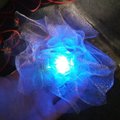 I, too, am curious what LEDs and controllers you typically use (or have used and love/hate)
I, too, am curious what LEDs and controllers you typically use (or have used and love/hate)
 We haven't worked with Bill Seymour
We haven't worked with Bill Seymour
 AJ, its kind of a tough market to be in to be honest. We look for pockets in the market that spend big on experiences. So big budget events (mainly commercial) and new upscale spaces like outdoor malls where clients are willing to take a bit of a risk and spend on an interactive/digital art installation
AJ, its kind of a tough market to be in to be honest. We look for pockets in the market that spend big on experiences. So big budget events (mainly commercial) and new upscale spaces like outdoor malls where clients are willing to take a bit of a risk and spend on an interactive/digital art installation
 Thank's Cate.
Thank's Cate.
 To add to the 3D modeling question, finding ways to build in other CAD software and importing data like a json file has been handy.
To add to the 3D modeling question, finding ways to build in other CAD software and importing data like a json file has been handy.
 We're still in the "early adopter" phase for interactive art/creative programming. You really need to find your champions- a lot of the work out there is on very low budget projects
We're still in the "early adopter" phase for interactive art/creative programming. You really need to find your champions- a lot of the work out there is on very low budget projects
 Bailey, we've used pixlites a lot in the past, mostly just because they can drive so many LEDs. There are a lot of good options out there though.
Bailey, we've used pixlites a lot in the past, mostly just because they can drive so many LEDs. There are a lot of good options out there though.
![]() @Aaron Oppenheimer What's been the impact of COVID-19 & lockdowns on your business?
@Aaron Oppenheimer What's been the impact of COVID-19 & lockdowns on your business?
 I imagine with permanent displays there are a lot of challenges dealing with the elements. Any horror stories there?
I imagine with permanent displays there are a lot of challenges dealing with the elements. Any horror stories there?
 Follow up to @James Murphy -- and others about the controllers -- what do you use for software? Custom libraries, open source? And re: hardware, what you is your choice of micoprocessor?
Follow up to @James Murphy -- and others about the controllers -- what do you use for software? Custom libraries, open source? And re: hardware, what you is your choice of micoprocessor?
 Fun Question: We live in the Middle of Green Bay Wisconsin and they Airport Flight Path is right over our house...soooooooo What have Ya Got for our Roof?
Fun Question: We live in the Middle of Green Bay Wisconsin and they Airport Flight Path is right over our house...soooooooo What have Ya Got for our Roof?
![]() As an EE/designer, the one thing makers need more of is modular designs. Plug and plays if you will. This takes the technicality out and opens up the process to more artists and the inexperienced. Are you guys anything to make the LED arts makerspace more available to all?
As an EE/designer, the one thing makers need more of is modular designs. Plug and plays if you will. This takes the technicality out and opens up the process to more artists and the inexperienced. Are you guys anything to make the LED arts makerspace more available to all?
 I second the question on the Makerspace resources....
I second the question on the Makerspace resources....
 Dan, oh god, building things to last outdoors is a challenge. You think something is waterproof, but it never truly is! UV and heat is brutal, and the repeated expansion and contraction of materials from the hot/cold can give your hardware a beating.
Dan, oh god, building things to last outdoors is a challenge. You think something is waterproof, but it never truly is! UV and heat is brutal, and the repeated expansion and contraction of materials from the hot/cold can give your hardware a beating.
 @Dan Maloney , yes theres a ton of challenges in setting up permanent outdoor pieces, mainly in weather and heat cycles. With our LED trees specifically, we've had a lot of problems with our LED Twigs and leaves failing over time, and have to do pretty regular maintenance to swap them out. We've had to fly a team out to Oslo, Norway where one of our trees are, in the middle of winter to spend a week doing maintenance on a tree in absolutely freezing weather
@Dan Maloney , yes theres a ton of challenges in setting up permanent outdoor pieces, mainly in weather and heat cycles. With our LED trees specifically, we've had a lot of problems with our LED Twigs and leaves failing over time, and have to do pretty regular maintenance to swap them out. We've had to fly a team out to Oslo, Norway where one of our trees are, in the middle of winter to spend a week doing maintenance on a tree in absolutely freezing weather
 Water always finds a way in, right?
Water always finds a way in, right?
 Thanks Jake, I thought that might be the case... Hell of an opportunity though...
Thanks Jake, I thought that might be the case... Hell of an opportunity though...
 To mitigate these problems, we invested in doing some pretty rigorous QC testing with our hardware
To mitigate these problems, we invested in doing some pretty rigorous QC testing with our hardware
 @AJ COVID-19 has had a tremendous impact on our business. When we started up the company in January, we expected to focus on the same kind of large-scale public art we'd done in the past. Unfortunately, COVID has wreaked havoc on the public/experiential market for the time being. Luckily, the benefit of being in the early startup phase is that we had the flexibility to pivot to consumer without having a lot of sunk costs. The consumer market is definitely thriving now because people are spending so much time at home. So COVID has significantly changed the market we operate in, but hasn't necessarily impaired our ability to do business.
@AJ COVID-19 has had a tremendous impact on our business. When we started up the company in January, we expected to focus on the same kind of large-scale public art we'd done in the past. Unfortunately, COVID has wreaked havoc on the public/experiential market for the time being. Luckily, the benefit of being in the early startup phase is that we had the flexibility to pivot to consumer without having a lot of sunk costs. The consumer market is definitely thriving now because people are spending so much time at home. So COVID has significantly changed the market we operate in, but hasn't necessarily impaired our ability to do business.
 Oslo in Norway.... Almost like Wisconsin but warmer..
Oslo in Norway.... Almost like Wisconsin but warmer..
 Yeah, water most of the time does find a way in, although a decent problem we've started to see at the 9-12 month mark is heat/UV damage in the plastic on our leaves. We really focused on waterproofing this last iteration so haven't seen too many failures from that
Yeah, water most of the time does find a way in, although a decent problem we've started to see at the 9-12 month mark is heat/UV damage in the plastic on our leaves. We really focused on waterproofing this last iteration so haven't seen too many failures from that
 Jeremy, Mark Slee's LX library definitely paved the way for 3d volumetric installations. If you aren't familiar with it, I highly recommend taking a look. Mark has been a pioneer.
Jeremy, Mark Slee's LX library definitely paved the way for 3d volumetric installations. If you aren't familiar with it, I highly recommend taking a look. Mark has been a pioneer.
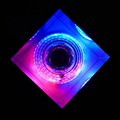
LX Studio
LX Studio is a digital lighting workstation, bringing concepts from digital audio workstations and modular synthesis into the realm of LED lighting control. Generative patterns, interactive inputs, and flexible parameter-driven modulation - a rich environment for lighting composition and performance.
![]() What are the differences between the consumer market and public art/experiental?
What are the differences between the consumer market and public art/experiental?
 As for making the LED arts makerspace more available, we've thought about trying to make tools for makers, but its pretty hard from a financial standpoint to go after the maker market. We'd love to eventually make a modular product or put out a controller- but there is definitely some good existing hardware out there to take advantage of!
As for making the LED arts makerspace more available, we've thought about trying to make tools for makers, but its pretty hard from a financial standpoint to go after the maker market. We'd love to eventually make a modular product or put out a controller- but there is definitely some good existing hardware out there to take advantage of!
 @Aaron Oppenheimer what part of the twigs or leves are failing? connectors? led's? bus? corrosion?
@Aaron Oppenheimer what part of the twigs or leves are failing? connectors? led's? bus? corrosion?
![]() What is your relation with Studio Drift? Was the tree at Burning Man a collab. effort?
What is your relation with Studio Drift? Was the tree at Burning Man a collab. effort?
 @Aaron Oppenheimer Even good documentation would be worth something to the maker market. Like talking to us now. We appreciate it!
@Aaron Oppenheimer Even good documentation would be worth something to the maker market. Like talking to us now. We appreciate it!
![]() Do you have an LED package that you like to use across projects, like APA102?
Do you have an LED package that you like to use across projects, like APA102?
 Yup, in a nutshell, the Tree of Tenere was a massive effort, led by Zach Smith, Mark Slee, Symmetry Labs, and Studio Drift.
Yup, in a nutshell, the Tree of Tenere was a massive effort, led by Zach Smith, Mark Slee, Symmetry Labs, and Studio Drift.
 @Tim Gremalm there are a couple different parts that we're seeing fail. Luckily the hardware is robust enough for continued deployment. Specifically, the heat cycles/UV cycles are damaging the leaves at the joint where they meet the twig, and the TPE plastic that surrounds the join is wearing away, which eventually exposes the wire that carries power/data, and can cause a leaf to short
@Tim Gremalm there are a couple different parts that we're seeing fail. Luckily the hardware is robust enough for continued deployment. Specifically, the heat cycles/UV cycles are damaging the leaves at the joint where they meet the twig, and the TPE plastic that surrounds the join is wearing away, which eventually exposes the wire that carries power/data, and can cause a leaf to short
 @Bailey Steinfadt you're welcome! maybe we can work with @Dan Maloney to do a blog post about where to start if you're trying to make LED art that includes hardware/software recommendations and general rules of thumb to follow. we've learned A LOT of lessons the hard way
@Bailey Steinfadt you're welcome! maybe we can work with @Dan Maloney to do a blog post about where to start if you're trying to make LED art that includes hardware/software recommendations and general rules of thumb to follow. we've learned A LOT of lessons the hard way
 @jack Yeah, apa102s are great. We've also recently been using a lot of 12v, like the WS2815s, which has been awesome. And even playing around with some SMD2020 LEDs for a smaller size.
@jack Yeah, apa102s are great. We've also recently been using a lot of 12v, like the WS2815s, which has been awesome. And even playing around with some SMD2020 LEDs for a smaller size.
 @AJ Even though they make use of some of the same technology, they're really different markets! For custom pieces, we'll work with the client and our manufacturing partners to create something unique that fits their space and needs. A lot of the work is in building something that can withstand the environment in the location we're putting it, and maintaining the work after it's built. Consumer is standardized plug and play pieces with little maintenance. The supply chains for the two are overlapping to some extent -- the LED leaves we have for trees and our fluora products have commonalities and the same manufacturer, for instance -- but each also has elements that are totally unique and involve different sourcing.
@AJ Even though they make use of some of the same technology, they're really different markets! For custom pieces, we'll work with the client and our manufacturing partners to create something unique that fits their space and needs. A lot of the work is in building something that can withstand the environment in the location we're putting it, and maintaining the work after it's built. Consumer is standardized plug and play pieces with little maintenance. The supply chains for the two are overlapping to some extent -- the LED leaves we have for trees and our fluora products have commonalities and the same manufacturer, for instance -- but each also has elements that are totally unique and involve different sourcing.
 @Aaron Oppenheimer - sounds good, we'll have to talk
@Aaron Oppenheimer - sounds good, we'll have to talk
 What upcoming technology are you excited about?
What upcoming technology are you excited about?
 With consumer, you're basically trying to make one standardized product that will appeal to a broad range of people, so market targeting and validation ends up being a pretty big piece of the picture. That's something you don't have to worry about with custom art.
With consumer, you're basically trying to make one standardized product that will appeal to a broad range of people, so market targeting and validation ends up being a pretty big piece of the picture. That's something you don't have to worry about with custom art.
 Are you doing any Lidar stuff?
Are you doing any Lidar stuff?
 @James Murphy not at the moment. We have done some installations with motion tracking, but mainly use a kinect. We did an installation back in NYC in 2017 that did thermal tracking, but it was crazy expensive and pretty hard to calibrate. We've played around with a lidar to do the same kind of thing (motion tracking for multiple people at once) but have never deployed one at a live installation. We'd love to one day!
@James Murphy not at the moment. We have done some installations with motion tracking, but mainly use a kinect. We did an installation back in NYC in 2017 that did thermal tracking, but it was crazy expensive and pretty hard to calibrate. We've played around with a lidar to do the same kind of thing (motion tracking for multiple people at once) but have never deployed one at a live installation. We'd love to one day!
![]() @Aaron Oppenheimer and @Dan Maloney I would love a lessons learned blog.
@Aaron Oppenheimer and @Dan Maloney I would love a lessons learned blog.
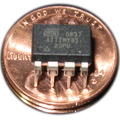 Do you all have to worry about FCC certification for custom art and/or consumer products?
Do you all have to worry about FCC certification for custom art and/or consumer products?
![]() @Cate Hall Thanks! I did a minor in Architecture (Physics major), and so I've spent some time floating around with students who make (non-LED) gallery installations for school projects. I'm still kinda interested in that gallery environment, although I didn't really go down the art route (Engineering, trying to pivot to software), and so that's the perspective that I thought from. Hadn't taken time to consider possible differences, although it's obvious now that you mention them.
@Cate Hall Thanks! I did a minor in Architecture (Physics major), and so I've spent some time floating around with students who make (non-LED) gallery installations for school projects. I'm still kinda interested in that gallery environment, although I didn't really go down the art route (Engineering, trying to pivot to software), and so that's the perspective that I thought from. Hadn't taken time to consider possible differences, although it's obvious now that you mention them.
 @Psygantic the SMD2020 LEDs have been really fun! We've also just been really excited about how small controllers are getting and utilizing wifi. Also, PoE is becoming more and more popular and makes a lot of sense for many installations.
@Psygantic the SMD2020 LEDs have been really fun! We've also just been really excited about how small controllers are getting and utilizing wifi. Also, PoE is becoming more and more popular and makes a lot of sense for many installations.
 To piggyback off of Jake's answer, were also really excited about tech thats bringing unique experiences to people's homes. Sort of riding the COVID wave, we may just need to make our homes more interesting while we can't go to museums, art installations and music festivals. Companies like Calm, Headspace Peloton, and Twitch come to mind! Will be interesting to see what innovation happens here in the next year
To piggyback off of Jake's answer, were also really excited about tech thats bringing unique experiences to people's homes. Sort of riding the COVID wave, we may just need to make our homes more interesting while we can't go to museums, art installations and music festivals. Companies like Calm, Headspace Peloton, and Twitch come to mind! Will be interesting to see what innovation happens here in the next year
 @leb9049 With custom art, generally no. Clients may have individual requirements or some may be mandated by their local regulators, so there is non-trivial cert work that has to happen with some frequency. It's likely a bigger issue for consumer, though we haven't entirely worked out our approach there yet. Since it's being plugged into a socket, some cert work will be required, but how much depends somewhat on the extent to which we end up using standardized components.
@leb9049 With custom art, generally no. Clients may have individual requirements or some may be mandated by their local regulators, so there is non-trivial cert work that has to happen with some frequency. It's likely a bigger issue for consumer, though we haven't entirely worked out our approach there yet. Since it's being plugged into a socket, some cert work will be required, but how much depends somewhat on the extent to which we end up using standardized components.
 Also, tech that makes it easier for non software engineers to get up and running, this has historically been a really big barrier to entry.
Also, tech that makes it easier for non software engineers to get up and running, this has historically been a really big barrier to entry.
 @CopperJockey we'll make it happen! we've got some other co-workers that would also love to contribute to an article like that
@CopperJockey we'll make it happen! we've got some other co-workers that would also love to contribute to an article like that
![]() @Cate Hall Designing a piece for a Ryoji Ikeda or Olafur Eliasson exhibit is obviously going to be a lot different from making mass-producible turn-key projects. Thanks for the window into stuff!
@Cate Hall Designing a piece for a Ryoji Ikeda or Olafur Eliasson exhibit is obviously going to be a lot different from making mass-producible turn-key projects. Thanks for the window into stuff!
 We recently put up a permanent indoor tree for an experiential space called Area15. They ended up getting approval from the city without doing FCC/UL certs, but had to implement a specialized sprinkler system above and in the tree for safety.
We recently put up a permanent indoor tree for an experiential space called Area15. They ended up getting approval from the city without doing FCC/UL certs, but had to implement a specialized sprinkler system above and in the tree for safety.
 @AJ It's been a really interesting process moving over to consumer, since we've had to develop a bunch of new capabilities/areas of expertise pretty quickly. But it's been a cool challenge and opportunity.
@AJ It's been a really interesting process moving over to consumer, since we've had to develop a bunch of new capabilities/areas of expertise pretty quickly. But it's been a cool challenge and opportunity.
![]() How do you find customers (or how do they find you) for (custom) projects / products?
How do you find customers (or how do they find you) for (custom) projects / products?
![]() How do you guys keep track of the zoning/cert/approval stuff? Have you had any close calls
How do you guys keep track of the zoning/cert/approval stuff? Have you had any close calls
![]() ?
?
![]() UV-C seems to be picking up traction in the COVID-19 fight. Have any customers contacted you about sterilization products?
UV-C seems to be picking up traction in the COVID-19 fight. Have any customers contacted you about sterilization products?
 @sander we've built a pretty strong local brand from doing a lot of events in SF, and big installations at burning man. We developed relationships with a lot of players in the events and real estate industry, so we just maintain those and reach out to others in the space. One big great thing for marketing is that video footage of our installations is huge eye candy and does really well on social media, so lots of people see something on instagram or facebook then find our website and reach out
@sander we've built a pretty strong local brand from doing a lot of events in SF, and big installations at burning man. We developed relationships with a lot of players in the events and real estate industry, so we just maintain those and reach out to others in the space. One big great thing for marketing is that video footage of our installations is huge eye candy and does really well on social media, so lots of people see something on instagram or facebook then find our website and reach out
 Hey all, I've got a question for folks who've been doing this for a while. I'm working on a project that involves coordination between architects, engineers (me), and artists. There are so many different languages you have to be able to speak. How does an engineer learn how to work with architects beyond just doing it? Is it just a learn-by-doing thing or are there recommendations?
Hey all, I've got a question for folks who've been doing this for a while. I'm working on a project that involves coordination between architects, engineers (me), and artists. There are so many different languages you have to be able to speak. How does an engineer learn how to work with architects beyond just doing it? Is it just a learn-by-doing thing or are there recommendations?
 obviously with COVID, some of that work has slowed down, so we took the opportunity to start working on a consumer product!
obviously with COVID, some of that work has slowed down, so we took the opportunity to start working on a consumer product!
 @Steve Pomeroy its really just about jumping in and doing it. i come from more of the director/project manager role, so for me its about communicating efficiently and effectively, and really listening to everyone on the team and making them feel heard. building trust and respect early on is key for a high functioning team. Some tips would be to setup a weekly standing call, use a task tracking software or google docs, take notes during the call and keep track of responsibility and to-dos. Don't be afraid to bug people!
@Steve Pomeroy its really just about jumping in and doing it. i come from more of the director/project manager role, so for me its about communicating efficiently and effectively, and really listening to everyone on the team and making them feel heard. building trust and respect early on is key for a high functioning team. Some tips would be to setup a weekly standing call, use a task tracking software or google docs, take notes during the call and keep track of responsibility and to-dos. Don't be afraid to bug people!
as an engineer, jake would prob have more advice, but one bit i have is to keep things simple!
 @AJ We basically handle it on an ad-hoc basis for large-scale custom. Since the type of clients we have for custom will generally have previous experience dealing with local regulations/requirements, we try to lean on them where we can and collaborate to make sure everything is up to code. We haven't had too much trouble with getting things where we need to be, but there have been a couple times we needed to think about solutions for fireproofing, like Aaron mentioned for Area15.
@AJ We basically handle it on an ad-hoc basis for large-scale custom. Since the type of clients we have for custom will generally have previous experience dealing with local regulations/requirements, we try to lean on them where we can and collaborate to make sure everything is up to code. We haven't had too much trouble with getting things where we need to be, but there have been a couple times we needed to think about solutions for fireproofing, like Aaron mentioned for Area15.
 Do permanent installation recipients pay for ongoing maintenance?
Do permanent installation recipients pay for ongoing maintenance?
 @CopperJockey We haven't had anyone contact us about UV-C, and would be somewhat surprised if someone did! We have a lot of expertise in artistic LED use, but none in medical use.
@CopperJockey We haven't had anyone contact us about UV-C, and would be somewhat surprised if someone did! We have a lot of expertise in artistic LED use, but none in medical use.
![]() @Cate Hall That's good. Code has gotta be its own weird universe. My current boss is working on his building inspector cert. It's not really something I ever thought about that much until he told me.
@Cate Hall That's good. Code has gotta be its own weird universe. My current boss is working on his building inspector cert. It's not really something I ever thought about that much until he told me.
 @Steve Pomeroy I think you just do the best you can to have solid documentation. In general, I think being agile is really important in building custom installations. There are always new challenges on every project. I suppose that's the part you learn to enjoy!
@Steve Pomeroy I think you just do the best you can to have solid documentation. In general, I think being agile is really important in building custom installations. There are always new challenges on every project. I suppose that's the part you learn to enjoy!
 Yeah, I love learning so it's part of the fun. I just have been hoping there are some cheat sheets like there often are for various engineering disciplines (software notably).
Yeah, I love learning so it's part of the fun. I just have been hoping there are some cheat sheets like there often are for various engineering disciplines (software notably).
 @Jake Lampack, you mentioned JSON. Is there plans for Fluora to make use of APIs, and be able to do something like have their plants reflect the current weather? Or maybe some other method of achieving this?
@Jake Lampack, you mentioned JSON. Is there plans for Fluora to make use of APIs, and be able to do something like have their plants reflect the current weather? Or maybe some other method of achieving this?
 Part of the fun of having solid documentation is learning what constitutes "solid documentation" in various fields.
Part of the fun of having solid documentation is learning what constitutes "solid documentation" in various fields.
 @Bailey Steinfadt its a pretty tough challenge getting them to fork out money. A lot of these guys are used to buying something once and not paying any maintenance fees. LEDs are finnicky, especially outdoors, so there's not really such a thing as no maintenance for these installations. With current maintenance contracts, we've split maintenance work between ourselves and the client, who utilize their own resources to help us out. In the future, we're trying to be more firm about the significant maintenance cost and having a mandatory maintenance contract
@Bailey Steinfadt its a pretty tough challenge getting them to fork out money. A lot of these guys are used to buying something once and not paying any maintenance fees. LEDs are finnicky, especially outdoors, so there's not really such a thing as no maintenance for these installations. With current maintenance contracts, we've split maintenance work between ourselves and the client, who utilize their own resources to help us out. In the future, we're trying to be more firm about the significant maintenance cost and having a mandatory maintenance contract
 oh, i forgot to mention one thing- all of you should join the LEDs are awesome facebook group! its definitely a place to learn more about this type of work and get help on your own projects
oh, i forgot to mention one thing- all of you should join the LEDs are awesome facebook group! its definitely a place to learn more about this type of work and get help on your own projects
 Yeah! They /are/ awesome.
Yeah! They /are/ awesome.

https://www.facebook.com/groups/LEDSAREAWESOME
LEDs ARE AWESOME
Post about anything LED related...from your latest LED creation, event, Calls for Art, new technology, favorite LED purveyors, websites, articles, conferences...to technical questions and discussion....
![]() Do you guys make custom LED boards or just buy premade strips and cut them down or does it vary from project to project? If you do buy premade strips, who are your approved vendors?
Do you guys make custom LED boards or just buy premade strips and cut them down or does it vary from project to project? If you do buy premade strips, who are your approved vendors?
 @Kelly Heaton Yeah, we will very likely have an open API for fluora. Excited to see what people do with their own control software or applications like IFTT.
@Kelly Heaton Yeah, we will very likely have an open API for fluora. Excited to see what people do with their own control software or applications like IFTT.
 Just realized we haven't linked to our websites yet! This is our site for fluora: https://www.ledhouseplant.com/
Just realized we haven't linked to our websites yet! This is our site for fluora: https://www.ledhouseplant.com/
 So, I've got a pet-peeve question: how do you convince everyone that 450Hz for PWM frequencies are crap?
So, I've got a pet-peeve question: how do you convince everyone that 450Hz for PWM frequencies are crap?
 And here is the color+light site (focused primarily on custom): http://colorandlight.art/
And here is the color+light site (focused primarily on custom): http://colorandlight.art/
![]() @Aaron Oppenheimer I've noticed that a lot of undergrad STEM programs, by design or by accident, breed a big "I know everything because I'm a Physics/CS/EE student, I don't *need* to talk to other people because I'm just *that smart*!", and then no, you actually have to work with different types of people IRL. (Was in undergrad from 2009-14, so this experience is fairly recent.) I've never liked that way of thinking, so it's nice to get some validation.
@Aaron Oppenheimer I've noticed that a lot of undergrad STEM programs, by design or by accident, breed a big "I know everything because I'm a Physics/CS/EE student, I don't *need* to talk to other people because I'm just *that smart*!", and then no, you actually have to work with different types of people IRL. (Was in undergrad from 2009-14, so this experience is fairly recent.) I've never liked that way of thinking, so it's nice to get some validation.
 @Steve Pomeroy we had an old co-worker who managed to build great LED art without any knowledge of writing code/software engineering. He loved this piece of software called mad mapper. I'd check it out!
@Steve Pomeroy we had an old co-worker who managed to build great LED art without any knowledge of writing code/software engineering. He loved this piece of software called mad mapper. I'd check it out!

MadMapper - The projection Mapping software
MadMapper — The projection Mapping software
MadMapper - the Projection Mapping software on MAC & WINDOWS. create 3d projection mapping and LED Light Mapping
MadMapper is a Professional video Mapping software available on macOS and Windows. It's the easiest tool to Create 3d video Mapping and LED Light mapping
Read this on MadMapper - The projection Mapping software
![]() Hey all!
Hey all!
I'm a light technician by night, working with regular DMX fixtures and Martin M-PC.
I wanna start building custom pixel LED fixtures using cheap hardware and map them volumetrically. LX Studio looks perfect for what I wanna build, so...
Is there a way to get started with volumetric pixel mapping in general for free/cheap? Can I just straight up download LX Studio somwhere and output to artnet?
 Don't forget the fluora project page:
Don't forget the fluora project page:

https://hackaday.io/project/171342-fluora
fluora
Light is more than a utility, it can be a captivating centerpiece that makes a space a destination. With an ultra-realistic natural plant form, fluora will bring your space to life with a level of magic and wonder never before seen in a lighting fixture. Fluora, in it's essence, is an immersive experience.
 I've been having a lot of fun with TouchDesigner for LED mapping.
I've been having a lot of fun with TouchDesigner for LED mapping.
![]() Do you guys know anyone who's made the jump between technical-person-working-with-creatives to creative-working-with-technical-stuff and been happy?
Do you guys know anyone who's made the jump between technical-person-working-with-creatives to creative-working-with-technical-stuff and been happy?
 @AJ oh yeah i feel you big time. I came out of my mechanical eng program at UCLA and moved up to SF to get involved in the hardware startup scene, and realized i knew nothing. I bought an arduino and some LEDs after that and started learning!
@AJ oh yeah i feel you big time. I came out of my mechanical eng program at UCLA and moved up to SF to get involved in the hardware startup scene, and realized i knew nothing. I bought an arduino and some LEDs after that and started learning!
 @Robert Arkenklo I believe LX Studio is currently free for non-commercial applications and for small commercial ones (<$25,000 in revenues).
@Robert Arkenklo I believe LX Studio is currently free for non-commercial applications and for small commercial ones (<$25,000 in revenues).
![]() can ssomeone help me with a hack im trying to perform on the game "zombs.io"
can ssomeone help me with a hack im trying to perform on the game "zombs.io"
 @AJ I've been moving much more into the creative realm from a highly technical realm
@AJ I've been moving much more into the creative realm from a highly technical realm
![]() i almost have it but the damn server wont save the hack
i almost have it but the damn server wont save the hack
 @CopperJockey We have made both, our own custom controller boards and custom flexible and rigid LED PCBs. We don't often buy pre-made strips, but typically we'd just get them from alibaba or something similar.
@CopperJockey We have made both, our own custom controller boards and custom flexible and rigid LED PCBs. We don't often buy pre-made strips, but typically we'd just get them from alibaba or something similar.
![]() lmk if anyone can
lmk if anyone can
![]() @Aaron Oppenheimer Thanks! I've really wanted to do Arduino for a while, actually bought a Nano a while ago (and a Pi), but never really got around to putting anything together. Do you have any tips for getting past the hill's-edge of intimidation?
@Aaron Oppenheimer Thanks! I've really wanted to do Arduino for a while, actually bought a Nano a while ago (and a Pi), but never really got around to putting anything together. Do you have any tips for getting past the hill's-edge of intimidation?
 @Steve Pomeroy Touch Designer can definitely be very powerful! Comes with it's own learning curve though
@Steve Pomeroy Touch Designer can definitely be very powerful! Comes with it's own learning curve though

 Dan Maloney
Dan Maloney

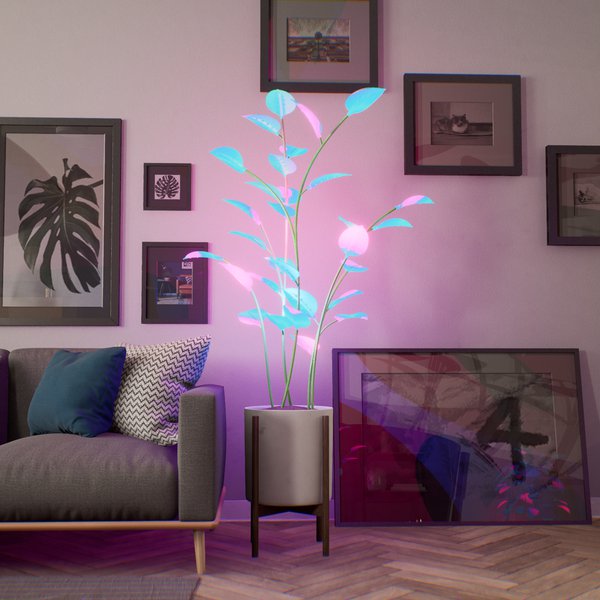
Discussions
Become a Hackaday.io Member
Create an account to leave a comment. Already have an account? Log In.